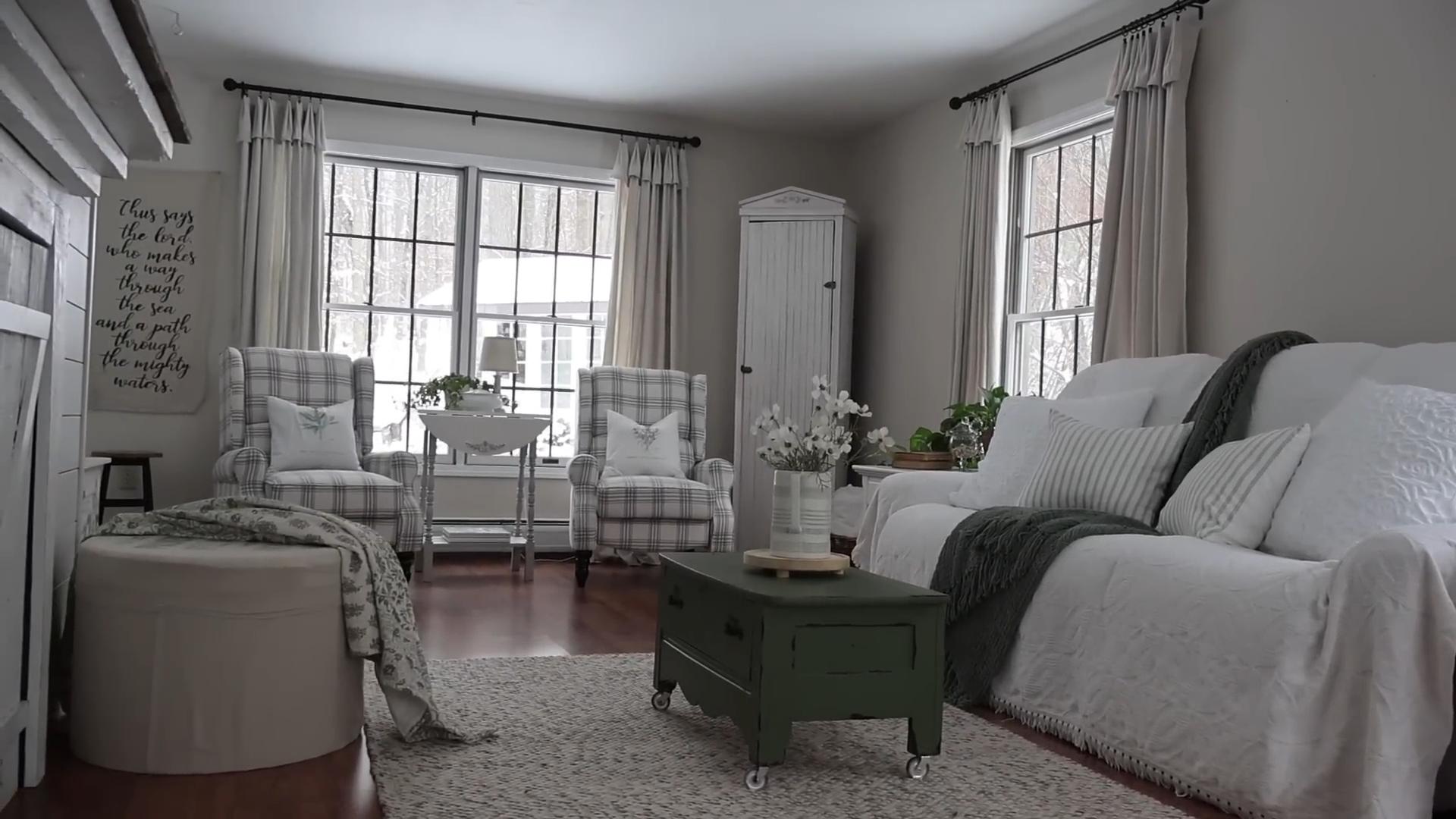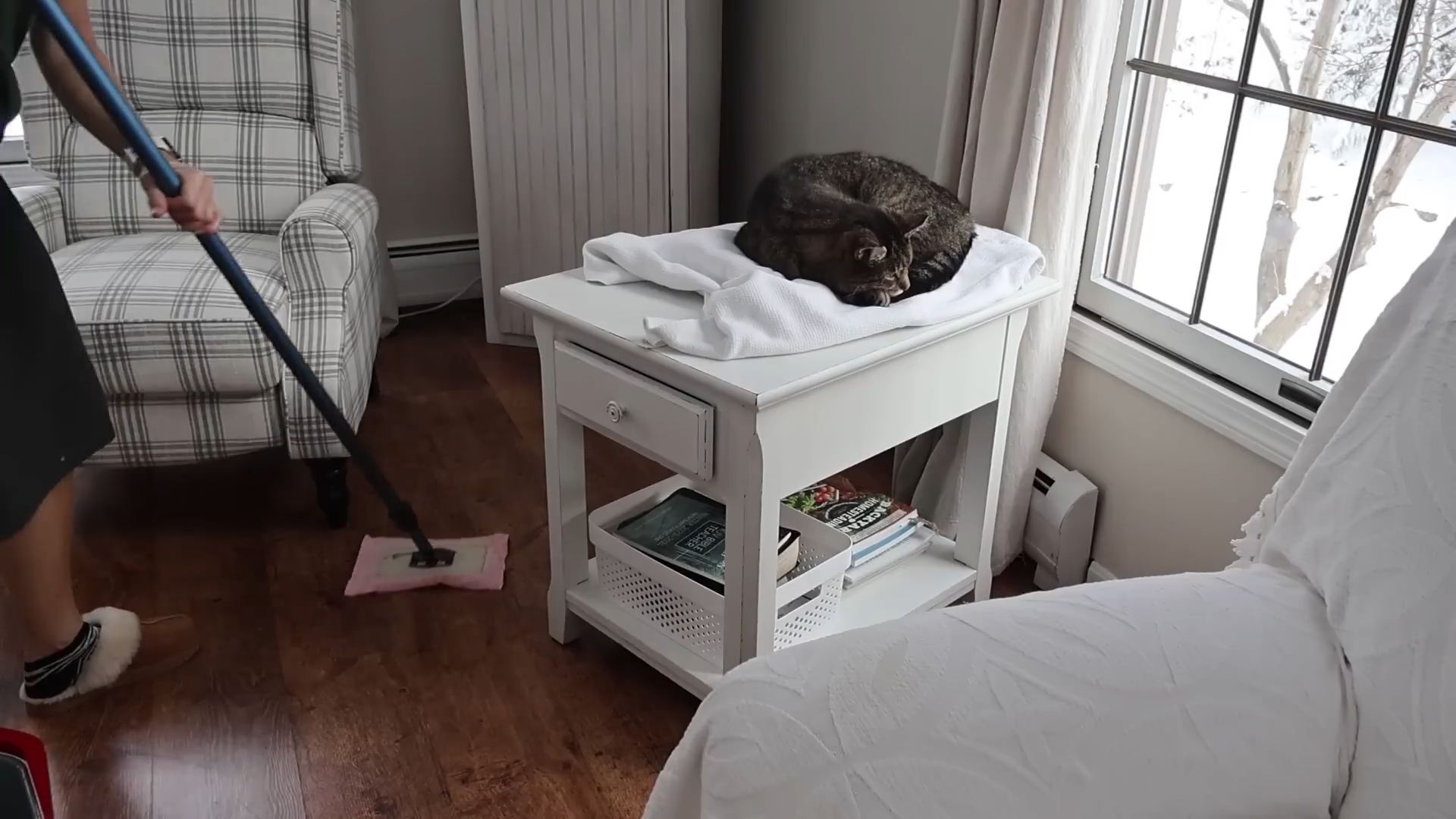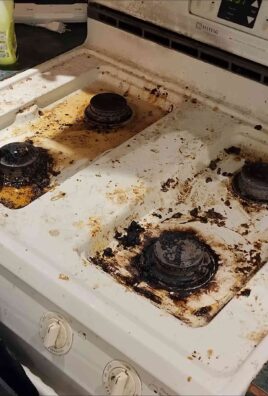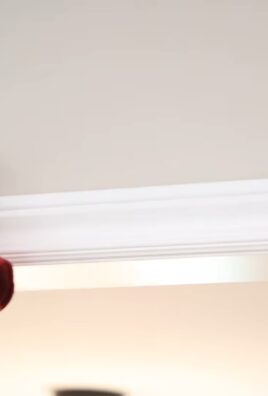Easy spring cleaning tips are exactly what you need to refresh your home and your spirit after a long winter! Let’s face it, by the time spring rolls around, our homes are often feeling a little… neglected. Dust bunnies have multiplied, clutter has taken over, and that feeling of freshness has long faded. But don’t worry, I’m here to share some simple, effective, and even enjoyable DIY tricks to help you tackle the mess and welcome the new season with open arms and a sparkling clean space.
Spring cleaning has a rich history, dating back to ancient cultures where it was often tied to religious or seasonal rituals. Think of the Persian tradition of “Khaneh Tekani,” which literally translates to “shaking the house,” a thorough cleaning done before Nowruz, the Persian New Year. These traditions highlight the symbolic importance of clearing out the old to make way for the new, a concept that resonates with us even today.
Why do you need these easy spring cleaning tips? Because a clean home is more than just aesthetically pleasing; it’s good for your mental and physical well-being! A decluttered space can reduce stress, improve focus, and even boost your mood. Plus, these DIY hacks will save you time and money, allowing you to enjoy the beautiful spring weather instead of spending all your weekends scrubbing. So, grab your cleaning supplies, put on some music, and let’s get started on transforming your home into a fresh, vibrant sanctuary!

DIY Spring Cleaning Hacks to Revitalize Your Home!
Okay, friends, let’s face it: spring cleaning can feel like a monumental task. But don’t worry! I’m here to share some of my favorite DIY cleaning hacks that will make the process easier, cheaper, and even a little bit fun. Get ready to transform your home from drab to fab with these simple tricks!
Hack #1: Sparkling Clean Windows with Vinegar
Forget expensive window cleaners! Vinegar is your new best friend. It’s natural, effective, and you probably already have it in your pantry.
What you’ll need:
* Spray bottle
* White vinegar
* Water
* Microfiber cloths (two: one for washing, one for drying)
* Optional: A few drops of your favorite essential oil (lemon or lavender work great!)
Step-by-step instructions:
1. Prepare the cleaning solution: In your spray bottle, mix equal parts white vinegar and water. If you want a little extra freshness, add a few drops of essential oil. I love lemon because it cuts through grime and leaves a lovely scent.
2. Spray the windows: Generously spray the window surface with your vinegar solution. Don’t be shy!
3. Wipe with a damp microfiber cloth: Using one of your microfiber cloths, wipe the window thoroughly to remove dirt and grime. Make sure to get into all the corners.
4. Dry with a clean, dry microfiber cloth: This is the key to streak-free windows! Use your second, dry microfiber cloth to buff the window until it’s sparkling clean.
5. Repeat if necessary: For particularly dirty windows, you might need to repeat steps 2-4.
Pro Tip: Avoid cleaning windows on a sunny day. The sun can dry the solution too quickly, leading to streaks.
Hack #2: De-Gunk Your Showerhead with Vinegar
Hard water can wreak havoc on your showerhead, leaving it clogged and sputtering. Here’s how to restore it to its former glory.
What you’ll need:
* White vinegar
* Plastic bag (a sandwich bag works well)
* Rubber band or twist tie
* Old toothbrush
Step-by-step instructions:
1. Fill the bag with vinegar: Pour enough white vinegar into the plastic bag to completely submerge your showerhead.
2. Attach the bag to the showerhead: Carefully position the bag over the showerhead, ensuring that the showerhead is fully immersed in the vinegar. Secure the bag with a rubber band or twist tie.
3. Soak overnight: Let the showerhead soak in the vinegar overnight. This will give the vinegar plenty of time to dissolve the mineral deposits.
4. Remove the bag and scrub: In the morning, remove the bag and discard the vinegar. Use an old toothbrush to scrub away any remaining mineral deposits.
5. Rinse thoroughly: Turn on the shower and let the water run for a few minutes to rinse away any lingering vinegar and debris.
Pro Tip: For stubborn clogs, use a needle or pin to poke out any remaining debris from the showerhead nozzles.
Hack #3: Freshen Up Your Mattress
Your mattress can harbor dust mites, dead skin cells, and other unpleasant things. Give it a refresh with this simple baking soda trick.
What you’ll need:
* Baking soda
* Sieve or shaker
* Vacuum cleaner with upholstery attachment
* Optional: A few drops of essential oil (lavender or eucalyptus are great for sleep!)
Step-by-step instructions:
1. Strip the bed: Remove all bedding, including sheets, blankets, and pillows. Wash them according to their care instructions.
2. Sprinkle baking soda: Generously sprinkle baking soda over the entire surface of your mattress. Use a sieve or shaker to ensure an even distribution.
3. Add essential oil (optional): If you’re using essential oil, add a few drops to the baking soda before sprinkling it on the mattress. This will give your mattress a lovely, fresh scent.
4. Let it sit: Allow the baking soda to sit on the mattress for at least 30 minutes, or even better, a few hours. This will give it time to absorb odors and moisture.
5. Vacuum thoroughly: Using your vacuum cleaner with the upholstery attachment, thoroughly vacuum the entire surface of the mattress. Make sure to get into all the crevices and seams.
6. Flip the mattress (optional): If your mattress is flippable, flip it over and repeat steps 2-5 on the other side.
Pro Tip: Do this on a sunny day and open the windows to air out your mattress even further.
Hack #4: Clean Your Microwave with Lemon
Microwaves can get pretty gross with splattered food and lingering odors. This lemon trick is a natural and effective way to clean and deodorize your microwave.
What you’ll need:
* Microwave-safe bowl
* Lemon
* Water
* Sponge or cloth
Step-by-step instructions:
1. Prepare the lemon water: Fill the microwave-safe bowl with about 1 cup of water. Cut the lemon in half and squeeze the juice into the water. Then, drop the lemon halves into the bowl.
2. Microwave for a few minutes: Place the bowl in the microwave and microwave on high for 3-5 minutes, or until the water is boiling and the microwave is steamy.
3. Let it sit: Leave the bowl in the microwave for another 5-10 minutes. This will allow the steam to loosen any stuck-on food particles.
4. Wipe clean: Carefully remove the bowl from the microwave (it will be hot!). Use a sponge or cloth to wipe down the interior of the microwave. The loosened food particles should wipe away easily.
Pro Tip: For stubborn stains, you can use the lemon halves to scrub the affected areas.
Hack #5: Unclog Drains with Baking Soda and Vinegar
Forget harsh chemical drain cleaners! This baking soda and vinegar method is a natural and effective way to unclog drains.
What you’ll need:
* Baking soda
* White vinegar
* Hot water
Step-by-step instructions:
1. Pour baking soda down the drain: Pour about 1/2 cup of baking soda down the drain.
2. Pour vinegar down the drain: Immediately follow with 1 cup of white vinegar.
3. Let it fizz: The baking soda and vinegar will react and create a fizzing action. Let this mixture sit for about 30 minutes.
4. Flush with hot water: After 30 minutes, flush the drain with a pot of boiling hot water.
Pro Tip: For particularly stubborn clogs, you may need to repeat this process a few times.
Hack #6: Revive Wooden Furniture with Olive Oil and Vinegar
Give your wooden furniture a new lease on life with this simple polish.
What you’ll need:
* Olive oil
* White vinegar
* Spray bottle
* Microfiber cloth
Step-by-step instructions:
1. Mix the solution: In a spray bottle, combine 1/4 cup of olive oil with 1/4 cup of white vinegar.
2. Shake well: Shake the bottle vigorously to ensure the oil and vinegar are well mixed.
3. Spray and wipe: Lightly spray the solution onto your wooden furniture. Use a microfiber cloth to wipe the furniture in the direction of the grain.
4. Buff to a shine: Use a clean, dry microfiber cloth to buff the furniture to a beautiful shine.
Pro Tip: Test the solution on an inconspicuous area of the furniture first to ensure it doesn’t damage the finish.
Hack #7: Clean Blinds with a Sock
Cleaning blinds can be tedious, but this hack makes it much easier.
What you’ll need:
* Old sock
* White vinegar
* Water
* Spray bottle
Step-by-step instructions:
1. Prepare the cleaning solution: In a spray bottle, mix equal parts white vinegar and water.
2. Put the sock on your hand: Slide the old sock onto your hand, like a glove.
3. Spray the sock: Lightly spray the sock with your vinegar solution.
4. Wipe the blinds: Use your sock-covered hand to wipe each slat of the blinds, one at a time. The sock will trap the dust and dirt.
5. Repeat as needed: If the sock gets too dirty, remove it, rinse it out, and repeat steps 3 and 4.
Pro Tip: For particularly dusty blinds, you can vacuum them

Conclusion
So, there you have it! This simple yet incredibly effective DIY trick for tackling spring cleaning is a game-changer. Forget spending a fortune on harsh chemicals and endless scrubbing. This method is not only budget-friendly and eco-conscious, but it also delivers remarkable results, leaving your home sparkling and refreshed. The beauty of this approach lies in its simplicity and adaptability. You’re using ingredients you likely already have in your pantry, and you’re creating a cleaning solution that’s gentle on your surfaces and your senses.
Why is this a must-try? Because it’s efficient, effective, and empowering. You’re taking control of your cleaning routine, knowing exactly what’s going into your cleaning products and minimizing your environmental impact. You’re also saving money and time, which are two things we could all use more of!
But don’t just take our word for it. The real magic happens when you try it yourself. Imagine the satisfaction of seeing your grimy grout transform before your eyes, or the joy of breathing in the fresh, clean scent of your homemade cleaner. This isn’t just about cleaning; it’s about creating a healthier, happier home environment.
Looking for variations? Absolutely! For a stronger disinfectant, add a few drops of tea tree oil or eucalyptus oil to your solution. If you’re dealing with particularly stubborn stains, try pre-treating the area with a paste of baking soda and water before applying the cleaning solution. And for those who prefer a different scent, experiment with other essential oils like lavender, lemon, or orange. The possibilities are endless!
We are confident that this easy spring cleaning trick will become a staple in your cleaning arsenal. It’s a testament to the fact that sometimes, the simplest solutions are the most effective. So, ditch the harsh chemicals, embrace the power of DIY, and get ready to experience the joy of a truly clean home.
Now, we want to hear from you! Try this DIY trick and share your experience in the comments below. What variations did you try? What were your results? We can’t wait to see how this simple solution transforms your spring cleaning routine. Let’s create a community of clean, green, and happy homes together!
Frequently Asked Questions (FAQ)
Q: What surfaces can I use this DIY cleaning solution on?
A: This cleaning solution is generally safe for most hard, non-porous surfaces, including countertops, sinks, tiles, bathtubs, and floors. However, it’s always a good idea to test a small, inconspicuous area first to ensure it doesn’t damage or discolor the surface. Avoid using it on delicate surfaces like marble, granite, or wood without proper research and caution, as the acidity of vinegar can potentially etch or damage these materials. For wood, ensure it is properly sealed and use the solution sparingly.
Q: Can I use this solution to clean my oven?
A: While this solution can be used to clean the interior of your oven, it’s best suited for light cleaning and maintenance. For heavily soiled ovens, you may need a stronger cleaning agent or a dedicated oven cleaner. To use this solution in your oven, first, remove any loose debris. Then, spray the solution liberally inside the oven and let it sit for a few minutes. Scrub with a sponge or brush and wipe clean. For stubborn baked-on food, create a paste of baking soda and water, apply it to the affected areas, let it sit overnight, and then scrub and wipe clean the next day.
Q: How long does the cleaning solution last?
A: This DIY cleaning solution is best used fresh. Because it doesn’t contain any preservatives, it can degrade over time. We recommend making a new batch each time you clean to ensure maximum effectiveness. If you do have leftover solution, store it in a cool, dark place in a tightly sealed container and use it within a week. Discard any solution that appears cloudy or has an unusual odor.
Q: Can I use different types of vinegar?
A: White vinegar is the most commonly recommended type of vinegar for cleaning due to its high acidity and lack of color, which minimizes the risk of staining. However, you can experiment with other types of vinegar, such as apple cider vinegar, but be aware that they may have a slightly different scent and could potentially leave a residue on some surfaces. Avoid using balsamic vinegar, as its dark color can stain.
Q: Is this cleaning solution safe for pets and children?
A: While this DIY cleaning solution is generally considered safer than many commercial cleaning products, it’s still important to exercise caution when using it around pets and children. Keep the solution out of their reach and ensure that surfaces are thoroughly rinsed and dried after cleaning to prevent ingestion. If your pet or child ingests the solution, contact your veterinarian or poison control center immediately.
Q: Can I add essential oils to the cleaning solution?
A: Yes, adding essential oils to your cleaning solution can enhance its cleaning power and provide a pleasant scent. Some popular essential oils for cleaning include tea tree oil (antiseptic), lemon oil (degreasing), lavender oil (antibacterial), and eucalyptus oil (disinfectant). Add a few drops of your chosen essential oil to the solution and shake well before using. Be sure to research the safety of essential oils before using them around pets and children, as some oils can be toxic to animals.
Q: What if I don’t have baking soda? Can I still use the solution?
A: Yes, you can still use the solution without baking soda. The vinegar and water mixture alone is an effective cleaner and disinfectant. However, baking soda adds a mild abrasive quality that helps to scrub away stubborn dirt and grime. If you don’t have baking soda, you can try using a different mild abrasive, such as salt or cream of tartar, or simply scrub a little harder.
Q: How often should I use this DIY cleaning solution?
A: The frequency of use depends on your cleaning needs and preferences. You can use this solution as often as you like for general cleaning and maintenance. For heavily soiled areas, you may need to use it more frequently or combine it with other cleaning methods.
Q: Does this solution work on mold and mildew?
A: Vinegar is an effective mold and mildew killer. To treat mold and mildew with this solution, spray the affected area liberally and let it sit for at least an hour. Then, scrub with a brush and wipe clean. For stubborn mold and mildew, you may need to repeat the process or use a stronger solution of undiluted vinegar. Ensure proper ventilation when cleaning mold and mildew to prevent the spread of spores.
Q: Can I use this solution to clean my windows and mirrors?
A: Yes, this solution can be used to clean windows and mirrors. However, for streak-free results, use a separate spray bottle with a mixture of equal parts white vinegar and water. Spray the solution onto the glass and wipe clean with a microfiber cloth or newspaper. Avoid cleaning windows and mirrors in direct sunlight, as the solution may dry too quickly and leave streaks.





Leave a Comment